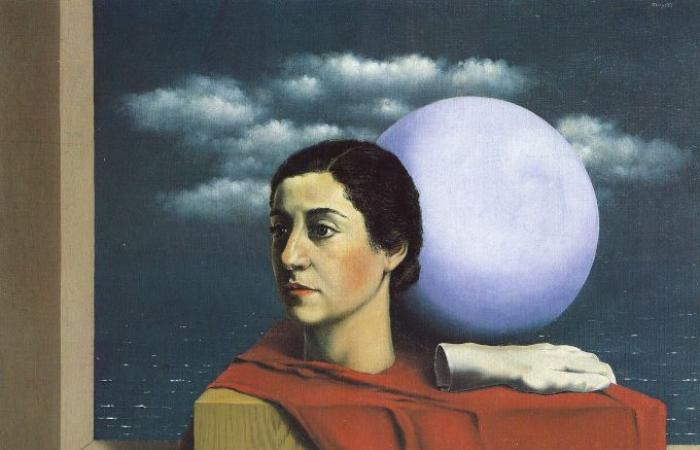by Editorial Staff, written on 01/07/2024
Categories: Exhibitions
The Civic Museums of Domodossola will host, from 18 July 2024 to 12 January 2025, a new exhibition entitled ‘The Times of Beauty. Between the Classical World, Guido Reni and Magritte’. The exhibition explores the concept of beauty throughout the centuries.
I Civic Museums “Gian Giacomo Galletti” Of Domodossola will host, from 18 July 2024 to 12 January 2025, a new exhibition entitled The Times of Beauty. Between the Classical World, Guido Reni and Magritte at the Museum of Palazzo San Francesco. Curated by Antonio D’Amico, Stefano Papetti and Federico Troletti, and made possible thanks to the Municipality of Domodossola in partnership with the Bagatti Valsecchi Museum of Milan and the Angela Paola Ruminelli Foundation, with the patronage of the Piedmont Region, this exhibition explores the evolution of the concept of beauty through the centurieshighlighting the constant reference to the models and formal and spiritual values of classical antiquity. On display are works by great masters such as Rubens, Carracci, Guido Reni, Pompeo Batoni, Canova, Funi, Sironi, De Chirico and Magritte. For the first time, classical statues from the Roman era from the National Roman Museum and the Baths of Diocletian will be exhibited in Domodossola.
Fu Giacomo Leopardi to identify the “time of beauty” in Greece in the 5th century BC, when artists such as Phidias, Myron and Polykleitos embodied the concept of kalokagathiaa balance between aesthetic and ethical values. From then on, the over forty works on displayincluding paintings and sculptures, intend to testify how this search for formal and spiritual beauty has crossed the history of art, adapting to different cultural eras.
Among the most significant works, theAnnunciation Of Guido Reni from the Civic Art Gallery of Ascoli Piceno and the Saint Sebastian Of Ludovico Carracci from the Ettore Pomarici Santomasi Foundation of Gravina di Puglia. The formal elegance of the Virgin and the angel in the imposing altarpiece, and the sculptural torsion of the bust in the young saint, testify to how in seventeenth-century Bologna the knowledge of classical statuary and the myth of Raphael, who had revived ancient beauty, found a perfect declination in line with the culture of the time. This is a legacy that Guido Reni collects from the Carracci.
The exhibition also offers a glimpse into the reinterpretation of classicism by artists such as Pieter Paul Rubens, who adapted classical sculptural models to the iconographic needs of the Baroque (a sketch of his work is on display). Our Lady of the Rosary). Il Portrait of Pauline Bonaparte by Antonio Canova, from the Napoleonic Museum in Rome, depicts the perfect face of Napoleon’s sister as Venus Victrix, an example of how the celebration of the past and the use of themes from classical mythology are placed, in this case, at the service of power, taking on celebratory and educational purposes.
The eclectic imprint that characterizes Italian art in the post-unification period does not exclude, either in the architectural or figurative fields, episodes of marked reference to the Greco-Roman tradition: this is demonstrated by the Genoese sculptor Demetrio Paernioauthor of numerous funerary monuments in the cemetery of Staglieno, who celebrates Alexandrian art by modelling one of the most precious figures of classicism, such as the Sleeping CherubThe subject changes but not the formulation of the image inspired in the Genoese’s canvas Domenico Piola which depicts Baby Jesus asleep on the Cross.
The exhibition ends with a focus on the first decades of the twentieth century, when the French critic Maurice Rejnal, in 1924, hoped for a “Return to Order” after the traumas of the First World War. The works of artists such as Funi, Campigli, Sironi, De Chirico and Magritte, exhibited in dialogue with the Renaissance and classical ones, reaffirm the eternal value of classical beauty. Among all of them, it will be possible to admire an exceptional work by René Magritte, Rena at the window from 1937, from a private collection.
The exhibition layout was designed by Studio Lys, coordinated by Matteo Fiorini, and the lighting project by LightScene Studio, in collaboration with Viabizzuno. The exhibition is accompanied by a catalogue published by Sagep Editori d’Arte.
About the exhibition
If you liked this article, subscribe to Windows on Art.
for the price of 12.00 euros per year you will have unlimited access to the articles published on the Finestre sull’Arte website and you will help us grow and maintain our free and independent information.
SUBSCRIBE TO
WINDOWS ON ART



